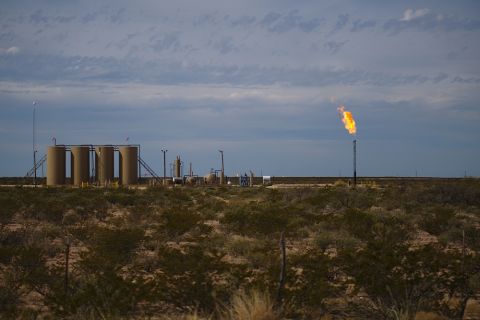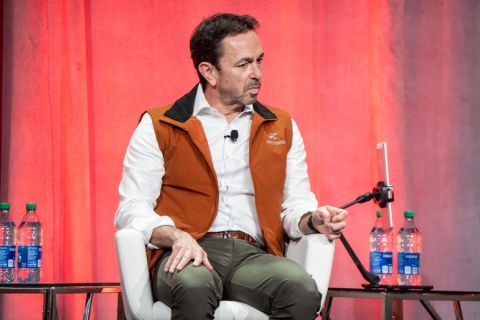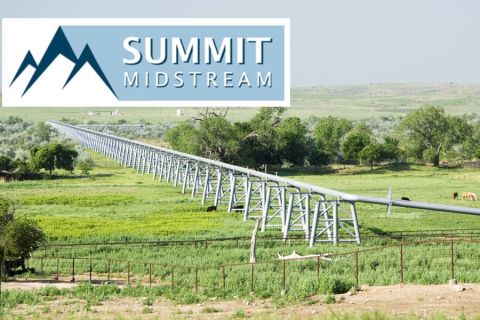
The board of directors approved the corporate conversion Nov. 2, and Stice said he expected the move would take effect on Nov. 13. (Source: Shutterstock)
Following a strong quarter in which Diamondback generated $820 million of free cash flow, executives informed investors that the company planned to be as selective as ever going forward, even as blockbuster consolidations continue in the Permian Basin.
“I think, as investors are really starting to understand, we have such a high-quality inventory right now that the bar is pretty high for additional opportunities to add to our inventory,” said Travis D. Stice, Diamondback chairman and CEO.
Stice said the company, built on an “acquire and exploit” strategy, will continue to follow the same criteria it always has for purchasing new assets: The acquisition must make logical industrial sense for the company, compete for capital immediately and be accretive on the company’s financial metrics.
Mergers and acquisitions, such as the Exxon Mobil-Pioneer deal, may have thinned the marketplace of potential buyers in the area, especially the private companies, said Kaes Van’t Hof, president and CFO of Diamondback. However, the remaining companies are large, well-funded and competitive.
“We just have to stick to our zones and our underwriting philosophy,” he said.
At the same time, Diamondback subsidiary Viper is spinning off into its own corporation to take advantage of the available mineral rights in the Permian.
The conversion is the right thing to do for investors, Stice said, “but the foundation of the decision is to fully highlight the advantageous nature of mineral ownership and the unique value proposition that Viper presents within the space.”
Diamondback created Viper to own and acquire mineral and royalty interests in oil and gas properties, mainly in the Permian. The board of directors approved the corporate conversion Nov. 2, and Stice said he expected the move would take effect on Nov. 13.
“It’s harder to find sizable packages under Diamondback that will move the needle for the next 5, 6, 7 years,” Van’t Hof said. “Generally, we have a great position operated by Diamondback, but the next leg of the stool is going to be undeveloped units, particularly in the Midland Basin, like what we found with GRP that drive growth into the next decade.”
On Nov. 1, Viper announced the closing of an acquisition for mineral and royalty interests from Warwick Capital and GRP Energy Capital, paid for with $750 million in cash and about 9.02 million Viper common units. In return, Viper now owns 32,000 net royalty acres in the Permian with a planned production of more than 25,000 bbl/d.
Van’t Hof said the GRP deal was a good example of why it was time for Viper’s conversion into its own corporation. It was an opportunity to move into undeveloped inventory that is still considered high-quality acreage.
“While there isn’t a huge Diamondback-operated component to (the GRP deal), we put our operator hat on and said, ‘would we like to own exposure to the core of the basin under competent operators like Pioneer, Endeavor, now Exxon, etcetera?’” he said.
In the third quarter earnings meeting, Viper reported 5% growth for two consecutive quarters and informed investors of $100 million in lease bonds for development.
Diamondback has spun off companies before. In 2018, the company’s Rattler Midstream subsidiary became a Delaware limited partnership that focused on midstream assets in the Permian. In August 2022, Diamondback rolled Rattler back into its portfolio with a $575.2 million deal.
Since then, the midstream subsidiary has been involved in at least one divesture. In January 2023, Diamondback sold 10% equity ownership in the Gray Oak crude pipeline to Enbridge for gross proceeds of $180 million.
Executives said Diamondback will remain active in oil production and related enterprises in the area. In September, the company announced a joint venture with Five Point Energy to create Deep Blue Midland Basin, to create an independent water infrastructure platform with expected volumes of 75,000 bbl/d.
Diamondback received $516 million in gross proceeds for the project and retained a 30% equity interest. Stice said the company will hold on to its stake for the foreseeable future.
“We’re excited to see what (Deep Blue) can do in terms of creating value for the 30% that we’re retaining,” he said.
For the company’s non-core asset sales, the company generated $1.7 billion of gross proceeds for the year, originally targeted at $1 billion by the end of 2023.
Recommended Reading
Waha NatGas Prices Go Negative
2024-03-14 - An Enterprise Partners executive said conditions make for a strong LNG export market at an industry lunch on March 14.
Kinder Morgan Sees Need for Another Permian NatGas Pipeline
2024-04-18 - Negative prices, tight capacity and upcoming demand are driving natural gas leaders at Kinder Morgan to think about more takeaway capacity.
Kinder Morgan Exec: Don’t Count Out Midstream in M&A Frenzy
2024-04-02 - Kinder Morgan’s Allen Fore said 2024 should be an ‘interesting’ year in M&A during a discussion at DUG GAS+ Conference and Expo.
Summit Midstream Launches Double E Pipeline Open Season
2024-04-02 - The Double E pipeline is set to deliver gas to the Waha Hub before the Matterhorn Express pipeline provides sorely needed takeaway capacity, an analyst said.
For Sale? Trans Mountain Pipeline Tentatively on the Market
2024-04-22 - Politics and tariffs may delay ownership transfer of the Trans Mountain Pipeline, which the Canadian government spent CA$34 billion to build.





